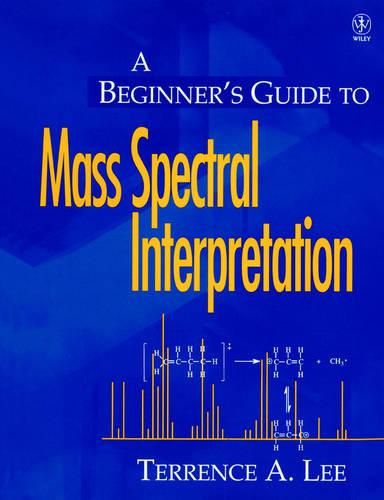Readings Newsletter
Become a Readings Member to make your shopping experience even easier.
Sign in or sign up for free!
You’re not far away from qualifying for FREE standard shipping within Australia
You’ve qualified for FREE standard shipping within Australia
The cart is loading…






This book is a logical, step–by–step guide to identification of organic compounds by mass spectrometry. The book is organized into chapters covering the major types of organic compounds, including alcohols, acids and esters, aldehydes and ketones, ethers, hydrocarbons, halogenated compounds, amines and amides, and sulfur–containing compounds. In each chapter, the mechanisms of the major fragmentation pathways are discussed, with reference to several simple sample compounds. By teaching the user to recognize typical fragmentations, the book removes the need to search databases, often limited, of electronic spectra. Key features of the book include: aeo 200 representative spectra of common organic compounds aeo Functional group approach to mass spectra interpretation aeo Appendix of a unknowna spectra with step–by–step guide to identification This book is a must for anyone who needs to identify organic molecules by mass spectrometry but does not need to know the detailed workings of a mass spectrometer.
$9.00 standard shipping within Australia
FREE standard shipping within Australia for orders over $100.00
Express & International shipping calculated at checkout
This book is a logical, step–by–step guide to identification of organic compounds by mass spectrometry. The book is organized into chapters covering the major types of organic compounds, including alcohols, acids and esters, aldehydes and ketones, ethers, hydrocarbons, halogenated compounds, amines and amides, and sulfur–containing compounds. In each chapter, the mechanisms of the major fragmentation pathways are discussed, with reference to several simple sample compounds. By teaching the user to recognize typical fragmentations, the book removes the need to search databases, often limited, of electronic spectra. Key features of the book include: aeo 200 representative spectra of common organic compounds aeo Functional group approach to mass spectra interpretation aeo Appendix of a unknowna spectra with step–by–step guide to identification This book is a must for anyone who needs to identify organic molecules by mass spectrometry but does not need to know the detailed workings of a mass spectrometer.